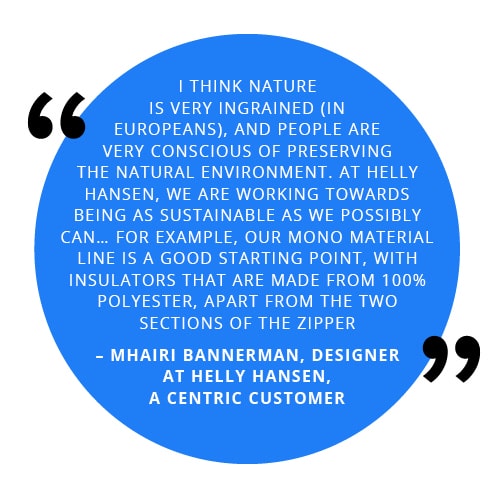4 Essential Sustainability Trends for Fashion and Retail: Forecast #3

Sustainability Forecast #3: Innovative Materials and Expertise
Fashion’s rapid turnover means that each year we consume approximately 80bn pieces of clothing – inevitably putting strain on the planet. And, when it comes to environmental action, one of the most effective ways both businesses and consumers can have a positive impact is to choose high-quality fabrics that are sustainable.
In the past, fibre technology and materials science were confined to specialists, sports and outdoor players, and the margins of the fashion industry. But now some of fashion’s biggest brands have joined the new ‘materials revolution’, characterised by rising investment, radical experimentation and a growing commitment to sustainability.
Since 2012, companies have been using the Higg Index to choose more sustainable and environmentally-friendly materials. And, to help customers make a more informed decision, sustainable fashion innovation platform, Fashion For Good, recommends judging the impact of materials on the basis of its ‘Five Goods Cradle-to-Cradle’ concept, which looks at how sustainability is integrated across the whole supply chain of a good or product.
Natural materials are more desirable for some products, such as good-quality leather shoes or wooden furniture, but high-performance synthetic materials make more sense for outdoor gear or sports equipment. There is an opportunity for brands to offer products with long-term guarantees, free repair services, consultations with stylists or product experts, along with readily available technical material specifications.
By placing emphasis on using the most suitable materials, developing smart innovations for optimal performance and sharing knowledge, brands can empower customers with insight. Yet, the best materials such as high-quality natural or highly technical fibres can be more costly, complicated and time-consuming to produce, so product sourcing timelines may need to be managed more carefully.

Brands that choose to offer repair services need close integration from manufacturing to customer service to make sure repairs are carried out effectively and promptly, and that data about repairs can be used to improve future products. Therefore, staff may need to have access to a huge amount of product and material data to offer expert advice and confidently sell to ever-curious customers.
With digital transformation tools such as Product Lifecycle Management (PLM), companies can monitor compliance and set quality expectations, ensure global and regional technical standards are respected and reassure customers that suppliers meet ethical and environmental expectations. What’s more, smart brands will leverage the use of connected mobile apps for factory audits, quality control and field testing to support more detailed, real-time control of standards at every stage.
Digital solutions that integrate 3D design technology into the sampling process can boost sustainability, with fewer physical samples needing to be manufactured and shipped, while also reducing design iterations and resulting in a better product overall.
Transformation tools can also centralize all material and product-related data into an up-to-date single source of the truth that makes it easy for new materials and components to be introduced, tracked and managed. This new technology enables teams to focus on sourcing the most sustainable materials and innovating product designs that customers will love!:








